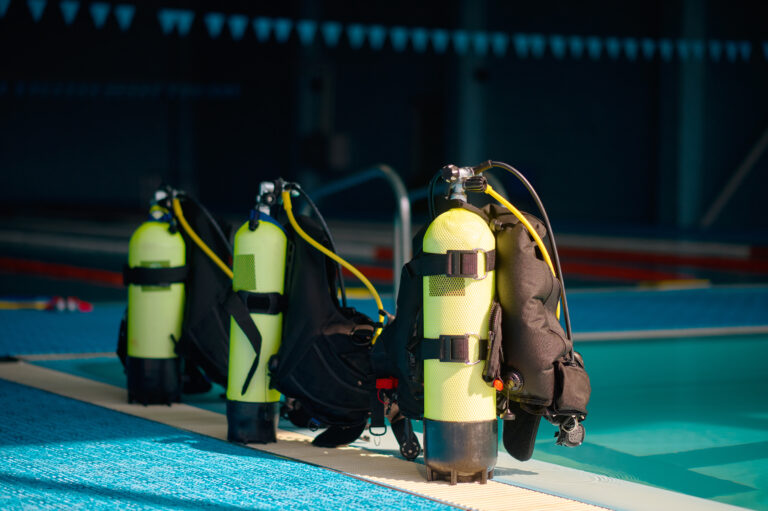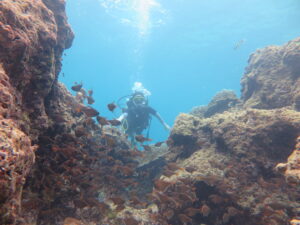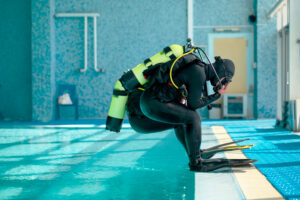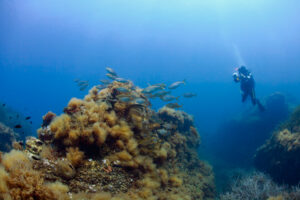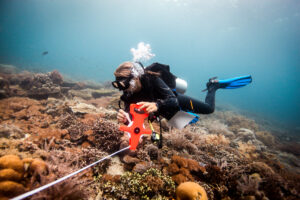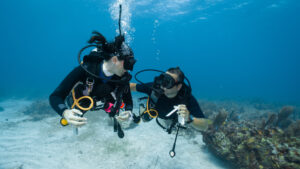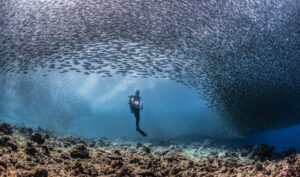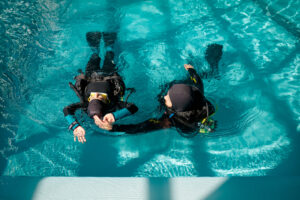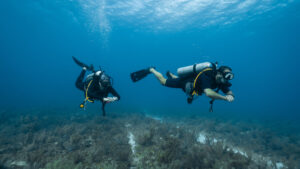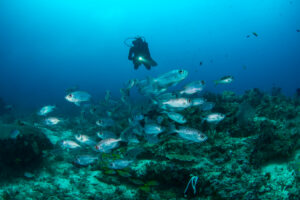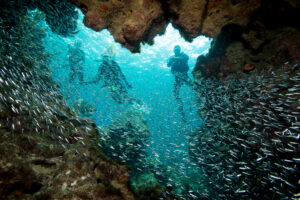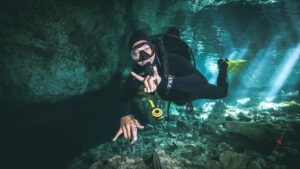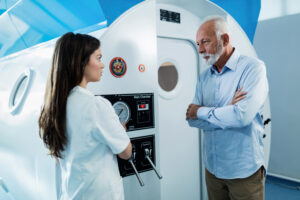What is a Buoyancy Control Device (BCD)?
A Buoyancy Control Device (BCD), also referred to as a Buoyancy Compensator (BC), is a vital piece of equipment for scuba divers. This inflatable vest, worn by divers, assists in maintaining buoyancy by enabling the diver to easily add or release air from the device. The BCD allows divers to achieve neutral buoyancy, a state where they neither float nor sink, making it possible to explore underwater environments with ease and precision. This article will discuss the history, types, functions, and proper use of BCDs in scuba diving.
History
The concept of buoyancy control dates back to the early days of scuba diving, where divers used rudimentary devices such as air bladders or improvised vests to manage buoyancy. The modern BCD was first introduced in the 1970s as a significant improvement over previous designs. Since then, technological advancements have led to the development of various BCD designs tailored to the needs of different divers and diving environments.
Types of BCDs
There are several types of BCDs available on the market, each designed to cater to specific diving preferences and situations. The most common types include:
Jacket-style BCD
This popular design resembles a vest and is worn over the wetsuit or drysuit. Jacket-style BCDs offer excellent stability and comfort, making them suitable for beginners and recreational divers.
Back-inflation BCD
Also known as a wing BCD, this design features an inflatable bladder located on the back of the diver. It provides a more streamlined profile, reducing drag and offering greater freedom of movement, making it popular among technical divers and underwater photographers.
Sidemount BCD
This type is specifically designed for sidemount diving, where cylinders are attached to the sides of the diver rather than the back. Sidemount BCDs offer improved flexibility and balance, making them ideal for cave and wreck diving.
Hybrid BCD
Combining features of both jacket-style and back-inflation BCDs, hybrid designs offer the comfort and stability of a jacket-style BCD with the streamlined profile of a back-inflation BCD.
Functions of a BCD
The primary function of a BCD is to help divers achieve and maintain neutral buoyancy. To do this, the BCD serves several purposes:
Inflation and Deflation
The BCD can be inflated or deflated, either orally or by using the low-pressure inflator connected to the diver’s air cylinder. By adding or releasing air, the diver can fine-tune their buoyancy, making it possible to hover, ascend, or descend in the water column with minimal effort.
Secure Tank Attachment
The BCD securely holds the air cylinder, ensuring it remains in place throughout the dive. Most BCDs have integrated straps or a backpack-style harness for this purpose.
Weight Distribution
BCDs often feature integrated weight systems or weight pockets, allowing divers to distribute weights evenly and comfortably. This reduces the need for a separate weight belt, simplifying the diver’s equipment setup.
Accessory Attachment
BCDs typically come with D-rings, pockets, or other attachment points for accessories such as dive lights, cameras, or slates, keeping essential gear within easy reach.
Proper Use and Maintenance
To maximize safety and performance, divers must learn to use and maintain their BCDs properly:
Proper Fit
A well-fitted BCD is crucial for comfort and safety. Divers should ensure that their BCD is the correct size and adjusted to fit snugly without restricting movement or breathing.
Pre-dive Inspection
Before each dive, inspect the BCD for any visible signs of wear, tear, or damage. Ensure that all buckles, straps, and valves are functioning correctly, and that the low-pressure inflator hose is securely connected to the air cylinder.
Buoyancy Control
During the dive, continuously monitor and adjust buoyancy as needed. Practice using the low-pressure inflator and dump valves to add or release air from the BCD, and become familiar with how different factors, such as depth and air consumption, affect buoyancy.
Post-dive Care
After each dive, rinse the BCD thoroughly with fresh water to remove salt, sand, and other debris. Ensure that all pockets and compartments are empty and clean, and inflate the BCD slightly to allow it to dry properly.
Storage
Store the BCD in a cool, dry place, away from direct sunlight and extreme temperatures. Avoid folding or compressing the BCD, as this can cause creases or damage to the bladder.
Regular Maintenance
In addition to routine cleaning and inspection, schedule annual servicing with a qualified technician to ensure the BCD remains in optimal condition. This may include checking and replacing the inflator, dump valves, and bladder as necessary.
The Buoyancy Control Device is an indispensable tool for scuba divers, playing a crucial role in achieving and maintaining neutral buoyancy throughout the dive. With various types of BCDs available, divers can choose the design that best suits their needs and preferences. Proper use, maintenance, and regular servicing will ensure the BCD remains in peak condition, providing divers with a safe and enjoyable diving experience. By understanding the history, types, functions, and proper care of BCDs, divers can enhance their underwater exploration and contribute to the continued advancement of scuba diving technology and techniques.

